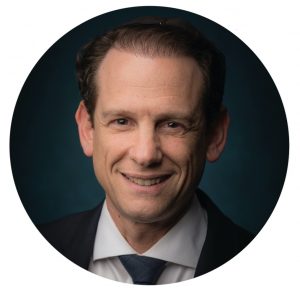According to Robin Abrahams and Boris Groysberg, authors of an article entitled, “How to Become a Better Listener,” “it’s never been more important—or more difficult—for leaders to be good listeners.”1 Endless Zoom meetings, the apparently increasing need we all have to share our own perspectives and stories, and the rise of the “attention economy,” where human attention is treated as a scarce commodity, have turned expert listening into a rare skill. While listening is essential in any situation, current realities impel us to refocus on listening as a way to further understand and appreciate the diverse array of activities and personnel at the Orthodox Union and in our relationships beyond. So how can we become better listeners?
With NCSY’s recent reissuing of the Rabbi Aryeh Kaplan Library, I’ve happily returned to many of his works that had such an impact on me over the many years. Indeed, the one book that both my wife Julie and I were carrying with us on our first date was Rabbi Kaplan’s Jewish Meditation! In the chapter on the Shema, he writes:
If the only significance of the Shema were to declare that G-d is One, then the opening words, “Listen, Israel,” would be redundant. But the Shema itself is telling us to listen—to listen and hear the message with every fiber of our being. It is telling us to open our perceptions completely, so as to experience G-d’s unity (p. 125).
How do we begin to listen to another, in this case, to The Other? Hearing requires pre-meditation, preparation and an attitude of openness to otherness. We may be thinking our own thoughts, struggling with something in our lives either consciously or not. But we must turn our attention not just with our minds but with “every fiber of our being” to become active listeners in mind and in body.
Rabbi Kaplan further explains that the letters of the word “Shema” themselves help us to accomplish this transition from the chaos of life to the focus we need in order to attend. To begin, the shin has the sound closest to white noise, which includes every wavelength. The mem, on the other hand, is “pure harmonic sound,” (p. 129) like a hum. By uttering the word, we move from chaos to harmony, from our attention being scattered everywhere, to a calm and focused presence.
This shift from our normal, chaotic, multitasking, attention-deficit perspective to a more mindful, meditative, receptive position represents the key to an active listening approach and mindset. Through this approach, one can begin to both understand what someone else is communicating, as well as convey a sense of engagement and caring. Listening then is not enough—one has to show that he or she is listening! Indeed, in my annual performance review one of the constructive comments was the sense that I am multitasking during Zoom meetings; even though I may feel I am listening, it appears to others that I am distracted. As Abrahams and Groysberg point out: “It can be challenging!” Both receiving the message and acknowledging its receipt at a time when we are struggling with new realities requires us to:
. . . take a moment to listen closely. Consider the questioner, not simply the question. Now is the time for leaders to really listen, understand the context, resist the temptation to respond with generic answers, and recognize your own listening limitations—and improve on them.
Perhaps with the help of Rabbi Kaplan and the Shema, we can begin to do so: to refocus our minds and beings, to accept the challenges of a multitasking world as well as our own attention limitations, and to mentally prepare to both listen and actively listen. All of these can help us interact with each other and become the better listeners we all can be as a team.
Many examples abound of our colleagues listening to each other and to our community to learn and grow:
- Yachad launched REACH, a Jewish resource and referral service for individuals with disabilities. This first-of-its-kind database has been meticulously built over the past year to pinpoint the best option(s) based on almost any combination of variables, including diagnosis, location or even coed/separate-gender programs. To date, we have received hundreds of calls and have given out more than 250 referrals.
- Torah Initiatives launched All Mishnah in conjunction with the new cycle of Mishnah Yomi beginning at end of December 2021 and asked you, our Torah learners, to help design and improve the interface.
- OU-JLIC launched an intergenerational program linking senior citizens with college students at nine different campuses, for interaction and education.
- Synagogue Initiatives launched the Synagogue Reimagine Initiative in California with cohorts of shul administrators, youth professionals and shul presidents.
- Community Projects and Partnerships’ Empowered Parenting Initiative has already launched in Cincinnati and Houston. The goal is to provide communities with resources to enhance the parent-child relationship, thereby improving general behavior and commitment to Torah values. Community led and driven!
These are but a few examples where we are trying to refocus and listen—to each other, to our communities and to you.
Rabbi Kaplan closes his discourse on the Shema by pointing to the third letter in the opening word, an ayin, which has the numerical value of seventy, “representing plurality as it exists in the mundane world” (p. 232). Listening, then, reaches a full culmination when we can appreciate diversity, voices other than our own, and can hear them and even validate them. May we all have hatzlachah in doing so!
Note
1. Harvard Business Review, hbr.org, 21 December 2021. https://hbr.org/2021/12/how-to-become-a-better-listener.
Rabbi Dr. Josh Joseph is OU Executive Vice President/Chief Operating Officer.
